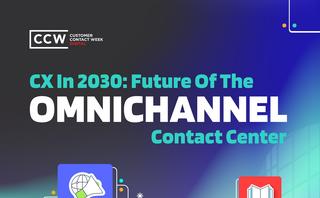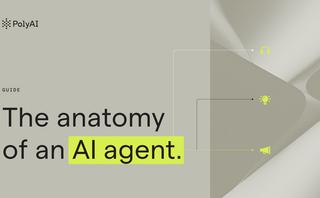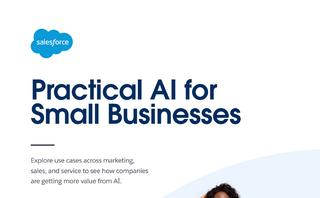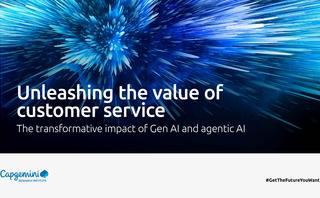151 notes tagged as ["Customer service"]
Filter your results by choosing one or more tags below or type your query in the search field above.
-

In 2023, 57% of consumers felt their experiences with businesses were getting worse. In 2024, 55% expressed that sobering sentiment. Unfortunately, that slight improvement was not the start of a course correction. According to CCW Digital’s 2025 Consumer Preferences Survey, an alarming 59% now feel that experiences are headed in the wrong direction.
The regression is unsurprising. In addition to experiencing many of the same pain points they have for years, including long wait times, repetitive questions, and impersonal interactions, consumers are encountering new challenges and reservations related to artificial intelligence (AI). Indeed, the technology that was supposed to alleviate customer frustration is only exacerbating the ill will. Clearly, brands are doing enough to “compete on the customer experience.” They are not doing enough to make their promises of “customer centricity” a reality.
-

Building an effective AI agent isn’t just about processing speech, it’s about mirroring the human experience within the conversation. This requires more than just converting speech to text and generating responses. It involves the careful inclusion of listening, understanding, and speaking to make conversations feel seamless, intuitive, and, most importantly, useful.
The future of customer service: AI that adapts to human communication
-

Get insights and use cases on how AI-equipped CRMs are optimizing sales, marketing, and service operations in our ebook, “Practical AI for Small Businesses.” You’ll learn how AI tools can drive growth and efficiency for your business, including:
How to generate personalized marketing content faster and more effectively.
Ways that AI tools in your CRM can speed up deal closures for your sales team.
-
You are currently enjoying the free trial mode which gives only back 3 results for each of your searches.
Click on Reset Search Tags to try another search.
Free NewsletterOnly paid members can get full access to the most recent content, create their own tags & personal folders, assign search results to specific projects and much more… all of this for less than 99c a day.
-

2025 Customer success book
Today’s customer experience is evolving. The New CX is here, redefining engagement through AI-driven intelligence and human ingenuity. This year’s Customer Success Book brings that vision to life. Inside, you’ll find real-world success stories from businesses that have embraced The New CX —transforming contact centers, integrating AI, empowering agents, and delivering seamless, intelligent experiences that deliver more for customers.
-

Why the luxury experience needs an AI moment
By enhancing the human connection, artificial intelligence enables luxury brands to redefine exceptional service at scale and sharpen their relevance for new generations of clients. Slower sector growth, intensifying competition, and client dissatisfaction give brands compelling reasons to act now and seize opportunities to:
• Meet rapidly changing client expectations. BCG’s global survey reveals that clients have high service expectations shaped by their positive experiences in other sectors. They also shop online more frequently and increasingly accept AI’s role in the luxury shopping experience.
-

Bringing the transformative power of generative AI to retail
Empowering teams, accelerating workflows and unlocking value across functions – that’s the power of generative AI in today’s retail landscape. But realizing its full potential requires a strategic approach — one that builds upon iterative implementation.
In this whitepaper, we delve into the latest predictions for the retail industry, revealing how generative AI is projected to increase productivity by 1.2-2%, translating into a staggering $400-$660 billion in value creation. But harnessing this potential requires more than just implementing the technology— it demands a strategic and iterative approach.
-

How will Agentic AI reshape the commerce industry in 2025?
Imagine a smart assistant that decides things on its own. That’s agentic AI, and by 2025, it will transform the commerce industry. From e-commerce to retail, it will make shopping more personal and help businesses run smoother. Let’s dive into how this shift will unfold.
Why Agentic AI Matters?
Agentic AI can handle complex tasks without any intervention, using machine learning in e-commerce and NLP in customer support AI. Only 11.11% of retailers plan to skip investment AI in 2025, reflect its growing importance. Tools like Amazon’s dynamic pricing will play a crucial role in agentic AI’s retail transformation, optimizing supply chains. Online merchants must keep an eye on these agentic AI trends in 2025 to match the pace.
-

Is this the year AI redefines the call center?
AI in call centers isn’t just the future — it’s now. Learn how it’s shaping customer interactions with predictive and conversational tech. AI call center technology is rapidly transforming how businesses handle customer service. In 2025, AI call center platforms are poised to dominate by providing real-time feedback, predictive analytics and in-depth analysis.
AI call center technology is AI call center technology is enhancing the customer experience while improving the daily workflow for agents. This article will explore how call center AI is changing the game when it comes to call center dynamics.
-

Unleashing the value of customer service
The importance of customer service cannot be overstated. It is one of the most powerful capabilities available to organizations to help them drive purchases, encourage loyalty, and shape brand perception by connecting directly with customer sentiment. Its success is measured in part by how well it fulfills consumer expectations – and those expectations are changing. How can organizations better meet the needs of customers, while also empowering dissatisfied customer service agents, and delivering top- and bottom-line benefits?
-

AI just matched your humans in customer satisfaction
Klarna CEO confirms it, and even journalists are stepping aside to let AI run the ship. “I’ve had a gnawing feeling lately about AI. Although the prophecies that chatbots would take our jobs have so far been false, the underlying technology’s evolution is making me believe it may soon automate much of my work, and perhaps yours too.” What’s next?
AI expands beyond chat. Generative AI is now capable of taking calls, conducting research, and simulating personalities, pushing its utility far past simple chatbot interactions.
-

Consumers believe AI will improve customer experience
Genesys, a global cloud leader in AI-Powered Experience Orchestration, has released its latest research report, “The State of Customer Experience,” revealing critical insights into consumer expectations and the evolving priorities of customer experience (CX) leaders worldwide. Notably, nearly two-thirds (64%) of consumers surveyed believe AI will improve the quality and speed of customer experience over the next two to three years. The good news is that organizations are focusing on the integration of AI into their CX strategies to close the gaps between the experiences they’re delivering today, and the services consumers want.